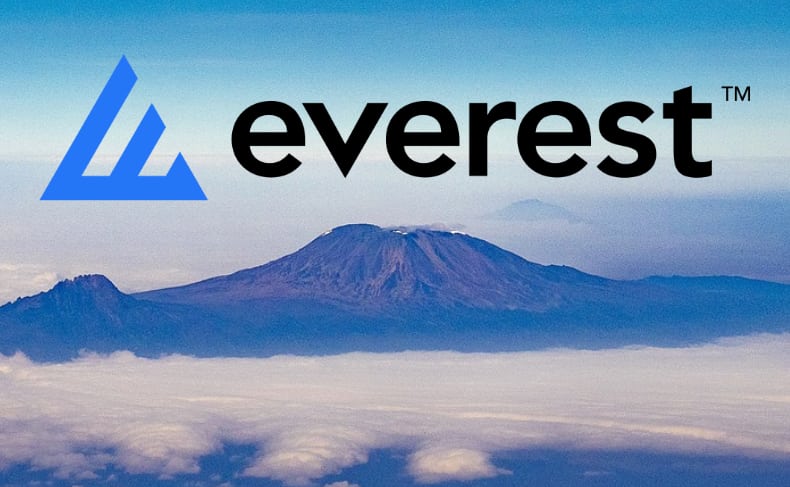Using Mt. Logan Re preferable to sponsoring cat bonds and ILW’s for Everest: CFO

For global insurance and reinsurance player Everest Group, using its Mt. Logan Re Ltd. third-party capitalised sidecar-like structure is seen as preferable to sponsoring catastrophe bonds or hedging with ILW’s, according to CFO Mark Kociancic.
But, the company recognises that a mix of capital shield sources is also desirable, so it seems we shouldn’t expect Everest to step fully away from instruments like catastrophe bonds or ILW’s, but it may put more emphasis on growing the Mt. Logan Re structure as and when investor appetite and market conditions dictate it can.
Speaking during the recent Everest third-quarter earnings call, CFO Mark Kociancic explained, “Whenever we talk about our capital shield, we always start with the gross risk that we’re underwriting. We essentially want to be gross underwriters, not a flow-through or anything else, in terms of the use of retrocession, cat bonds, etc. So, that’s kind of the starting point.”
He was asked about the Everest sponsored catastrophe bond program, under the Kilimanjaro Re name, and whether this remains a priority source of risk capital and hedging for Everest and how the company thinks about cat bonds currently.
Given the hard reinsurance market environment, Everest has been consciously growing into catastrophe reinsurance and also retaining a greater share of the economics it seems, made easier by the stricter terms and higher attachment points it is likely writing a good deal of that business at.
At the same time, Everest has raised fresh capital for Mt. Logan Re in recent months and by making use of the sidecar vehicle can earn fees, as well as share some of its peak risk exposures with investors.
But still, there is a place for cat bonds and industry-loss warranties (ILW’s), it just seems that in the harder market environment Everest’s appetite for each is moving a little and going to be dependent on a number of factors going forwards.
Kociancic said, “So we have a substantial laddering of cat bonds, you know, typically over a four or five year type of duration. There are different layers at which they attach and our book changes as well on the gross side from time to time.
“So we take the gross portfolio that we’re underwriting into account, we take our overall cat position into account, and then we start to modify. There’s a couple of other factors that would go into it.”
The CFO went on to explain the companies thinking around how to select capital sources for hedging and risk sharing.
“Let me just start with the easy stuff. We have the ability to use and we prefer to use Mt. Logan our third-party sidecar vehicle as much as we can in terms of hedging and aligning it with the kind of risk we’re taking in property cat,” Kociancic said.
He added that, “Tactical use of ILW’s on a periodic basis is another tool that we use. We use this proactively, depending on where you know the efficiency of the pricing and the placements are for cat bonds and ILW’s and then Logan of course.”
Going on to say that, “We also take into account the capital position you referenced the capital raise in May as an additional source of capital base for the for the company, so that definitely enters the equation.”
Then saying, “Lastly, I would I would throw into the mix the economic capital at risk graph that we talk about frequently in our investor deck and essentially, that space that we’re comfortable playing in shows that we have a lot of room to expand risk appetite within our tolerances for tail risk, earnings at-risk, and we tend to do that, especially when we see superior margin on the types of risks that we’re underwriting, particularly property cat.
“So we take all of these factors that I’ve mentioned, to plan out our capital shield going forward.”
As to why Everest had let some of its Kilimanjaro Re catastrophe bonds mature lately, Kociancic said, “We had a conscious decision to not renew two bonds in the spring. We did add another one at a different layer, but net-net there was a reduction.”
Adding, “We’ve got significant capacity that’s up for maturity in, I believe it’s November, December, and that’s something that we’re taking into account now, but I’ve given you the framework of how we look at it.”
Everest has $425 million of Kilimanjaro Re catastrophe bonds that mature in December (the Kilimanjaro III Re Ltd. (Series 2019-1) issuance), so it is going to be interesting to see whether the re/insurer comes back to renew any of this.
Market conditions and pricing indications are likely to be key in this decision, as to is the prospect of more capital inflows to Mt. Logan Re, we imagine.
Kociancic concluded, “So I can assure you that you know, given our ambition as a gross underwriter, and pursuing superior risk-adjusted returns, we’re going to look at the options on the capital shield side relative to our gross book as we make those decisions.”
In addition, at the Everest Group investor day on November 14th, executives cited the continued growth potential of Mt. Logan Re and the role it can play in optimising the companies hedging.
Multiple forms of capital are used, with each selected according to the risks and their appropriateness, the executives explained when discussing the Everest capital shield.
Of the capital shield tools available to Everest, Mt. Logan Re has strategic prioritisation, they reiterated.
While instruments such as catastrophe bonds and ILW’s are seen as more tactical, but likely to continue to be used.






